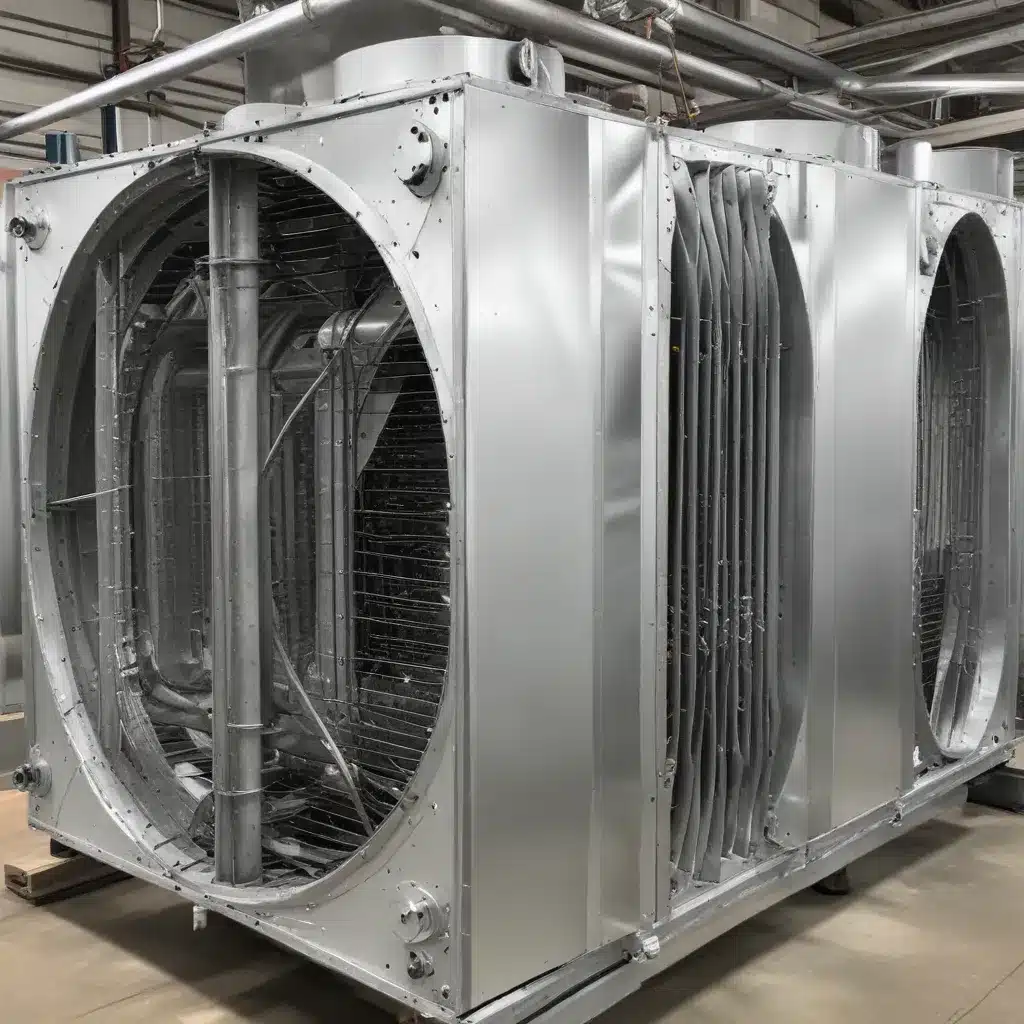
As a seasoned expert in the field of air-cooled heat exchangers, I’ve seen firsthand how thermal bridging can significantly impact the performance and efficiency of these critical components. Thermal bridging occurs when heat flows through materials with high thermal conductivity, creating pathways for heat transfer that bypass the insulation. In the context of air-cooled heat exchanger assemblies, this phenomenon can lead to significant energy losses, reduced heat transfer effectiveness, and even premature component failure.
Understanding Thermal Bridging in Air-Cooled Heat Exchangers
Thermal bridging in air-cooled heat exchanger assemblies can manifest in various ways. The most common culprits are the structural supports, mounting frames, and metal components that connect the heat exchanger to the surrounding structure. These high-conductivity elements create conductive paths that allow heat to bypass the insulation, leading to localized areas of increased heat transfer and potential condensation issues.
Another source of thermal bridging can be found in the heat exchanger core itself, where the fins or tubes are in direct contact with the casing or frame. This direct metal-to-metal connection can create a thermal bridge, compromising the overall thermal performance of the assembly.
The consequences of unmitigated thermal bridging in air-cooled heat exchangers can be severe:
- Reduced Thermal Efficiency: Thermal bridges allow heat to escape the system more readily, diminishing the overall heat transfer effectiveness of the air-cooled heat exchanger.
- Increased Energy Consumption: To compensate for the heat losses caused by thermal bridging, the system may require more energy to achieve the desired thermal performance, leading to higher operating costs.
- Condensation and Corrosion Issues: Thermal bridges can create localized cold spots on the heat exchanger assembly, leading to condensation buildup and accelerated corrosion of components.
- Potential Structural Damage: Uncontrolled thermal bridging can result in temperature gradients that cause differential expansion and contraction, potentially leading to structural deformation, cracking, or even failure of the heat exchanger assembly.
Strategies for Thermal Bridging Mitigation
To mitigate the detrimental effects of thermal bridging in air-cooled heat exchanger assemblies, engineers and designers must adopt a multifaceted approach that combines strategic material selection, innovative design techniques, and effective installation practices. Let’s explore some of the key strategies:
Material Selection and Thermal Breaks
The choice of materials used in the construction of air-cooled heat exchanger assemblies is crucial for minimizing thermal bridging. Prioritizing the use of low-conductivity materials, such as engineered plastics, composites, or thermally broken aluminum, for structural components and mounting frames can significantly reduce the conductive heat transfer pathways.
Additionally, the incorporation of thermal breaks, which are insulating elements inserted between high-conductivity components, can effectively interrupt the thermal bridge and improve the overall thermal performance of the assembly. These thermal breaks can be made of materials like polyamides, polyurethanes, or high-performance elastomers, depending on the specific application requirements.
Optimized Heat Exchanger Core Design
The design of the heat exchanger core itself can also play a critical role in mitigating thermal bridging. Engineers can explore innovative fin and tube configurations that minimize direct metal-to-metal contact between the core and the surrounding casing or frame. This can include the use of discontinuous fin designs, optimized tube support structures, or the incorporation of insulating materials within the core assembly.
By minimizing the conductive pathways within the heat exchanger core, the overall thermal efficiency of the assembly can be significantly improved, reducing the impact of thermal bridging.
Modular and Segmented Assemblies
Adopting a modular or segmented approach to air-cooled heat exchanger design can also be an effective strategy for managing thermal bridging. By breaking down the overall assembly into smaller, independent modules or segments, the thermal bridges can be isolated and addressed more effectively.
This modular design approach allows for the incorporation of dedicated thermal breaks, the use of different materials for specific components, and the optimization of the heat transfer pathways within each module. This can result in enhanced thermal performance and better control over localized thermal bridging issues.
Thermal Modeling and Simulation
The use of advanced thermal modeling and simulation tools can be invaluable in the design and optimization of air-cooled heat exchanger assemblies with respect to thermal bridging. These powerful computational tools can simulate heat transfer patterns, identify critical thermal bridging locations, and evaluate the effectiveness of mitigation strategies before physical prototyping.
By leveraging thermal modeling, engineers can make informed decisions about material selection, component geometries, and assembly configurations, ultimately leading to more efficient and reliable air-cooled heat exchanger designs.
Maintenance and Monitoring for Thermal Bridging
Effective maintenance and monitoring practices are essential for maintaining the thermal performance of air-cooled heat exchanger assemblies over their lifetime. Regular inspections, thermal imaging, and preventive maintenance can help identify and address any emerging thermal bridging issues before they escalate into more significant problems.
Thermal imaging, in particular, can be a valuable tool for detecting and locating areas of thermal bridging within the heat exchanger assembly. By identifying hot spots or cold spots, maintenance personnel can quickly pinpoint the problematic areas and take appropriate corrective actions, such as repairing or replacing compromised components.
Conclusion
Thermal bridging in air-cooled heat exchanger assemblies is a critical challenge that requires a comprehensive and proactive approach. By understanding the underlying mechanisms, adopting strategic material selection, optimizing the heat exchanger core design, and leveraging modular assembly techniques, engineers can effectively mitigate the detrimental effects of thermal bridging.
Continuous thermal modeling and simulation, coupled with diligent maintenance and monitoring practices, will further strengthen the thermal performance and reliability of air-cooled heat exchanger systems across various industrial applications. By addressing thermal bridging, engineers can unlock enhanced energy efficiency, extended component lifespan, and improved overall system performance – all of which are essential for driving sustainable and cost-effective heat transfer solutions.
To learn more about the latest advancements in air-cooled heat exchanger technology and how to optimize your systems, visit https://www.aircooledheatexchangers.net/. Our team of experts is dedicated to providing practical insights and innovative solutions to help you overcome thermal bridging challenges and achieve unparalleled heat transfer performance.

